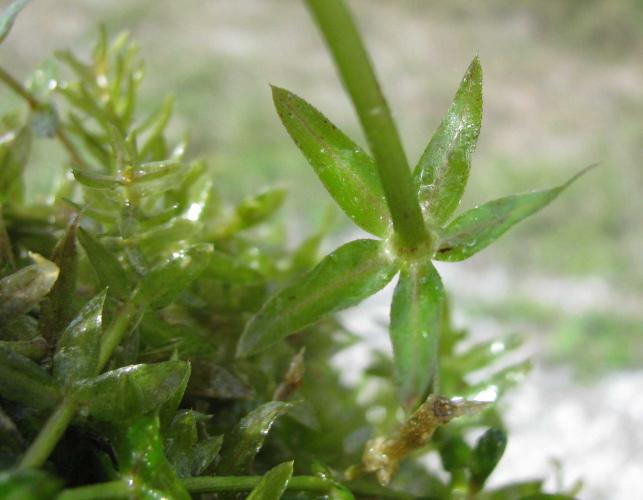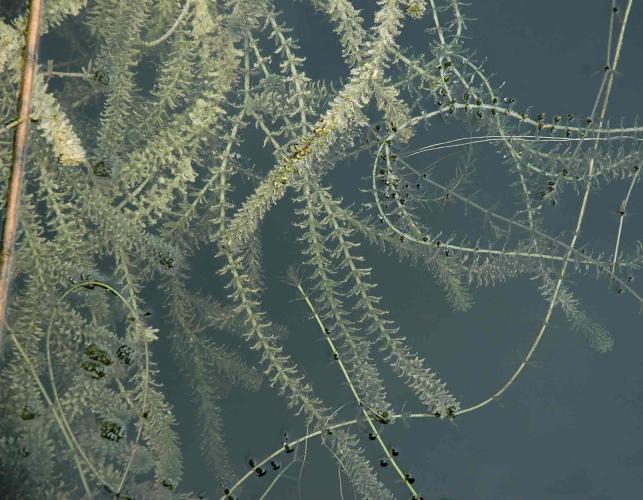It is Invasive Species Awareness Week!
Let's Talk About The Hydrilla Project...
Hydrilla is a highly invasive aquatic plant. In areas of the U.S. where hydrilla is established, it causes great expense to local economies and businesses. It damages ecosystems and water supplies, and it hampers recreational opportunities.
Hydrilla was first found in southwest Missouri in 2012. Shortly after the initial detection, a Missouri Department of Conservation (MDC)-led team that includes City Utilities of Springfield (CU), Greene County, the US Army Corps of Engineers, Department of Natural Resources (DNR), James River Basin Partnership (JRBP), and WCO was formed to combat hydrilla in southwest Missouri. The team’s approach is multifaceted and includes a variety of detection, control, and prevention measures.
Shortly after the initial detection, a Missouri Department of Conservation (MDC)-led team that includes City Utilities of Springfield (CU), Greene County, the US Army Corps of Engineers, Department of Natural Resources (DNR), James River Basin Partnership (JRBP), and WCO was formed to combat hydrilla in southwest Missouri. The team’s approach is multifaceted and includes a variety of detection, control, and prevention measures.  This collaborative effort is the key to success as no one group can tackle an invasive such as hydrilla alone.
This collaborative effort is the key to success as no one group can tackle an invasive such as hydrilla alone.
As of today, 37 hydrilla sites have been detected in southwest Missouri with most being in private waters. These sites are in the James, Little Sac, Pomme de Terre, Niangua, and White River watersheds. Of the known sites, 36 of 37 are under a hydrilla eradication plan which includes an initial multi-year “treatment” phase followed by a multi-year “monitoring-only” phase. Going into 2023, 13 sites are in the “treatment” phase, 21 sites are in the “monitoring-only” phase, and two sites have made it to “eradication” phase. In other words, hydrilla has been reduced to non-detectable levels in over 50 percent of the sites and two of those sites have stayed hydrilla free for five consecutive years. This is progress. The one remaining site made it to the “monitoring-only” phase before the site changed ownership in 2021.
Since then, we have been unable to engage with the new owner. Efforts on that front will continue in 2023. As sites are moving into the “monitoring-only” phase, we are working with the landowners on improving the overall ecosystem of their impoundments. This has included discussions on fisheries management objectives and introducing native aquatic plants (after going through 60-day quarantine period) that enhance fish habitat and water quality along with benefiting wildlife and pollinators.

Our story at Fellows Lake, the first known public waterbody to have hydrilla in Missouri, continues to follow the path towards eradication. This past year (2022) was the second year for the site to be in the “monitoring-only” phase. MDC Staff inspected the known area twice during the growing season with rakes and underwater cameras. No hydrilla was detected. MDC staff also used rakes, underwater cameras, and side imaging sonar to search the main lake for aquatic plant stands and hydrilla. Again, no hydrilla was detected.
Our progress at Fellows Lake illustrates the importance of early detections and rapid responses in our overall battle against hydrilla. Similar search efforts were undertaken at Lake Springfield. Staff from MDC, JRBP, and Greene County searched the upper portions of the lake with rakes. No hydrilla was detected in their efforts. In 2023, treatments will resume in early April and monitoring activities will resume in July. Both activities will be on-going throughout the growing season. Other planned activities include continued inspections/monitoring of area streams and small impoundments, public outreach, and habitat enhancement. We also plan on continuing coordinated inspection efforts at Fellows Lake and other larger waterbodies within southwest Missouri. With hydrilla on the landscape, we cannot afford to let up. Diligence is key to controlling this invasive.
Contributed by Kara Tvedt, Fisheries Biologist, MDC
Photos Courtesy of Missouri Department of Conservation

